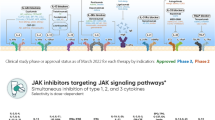Abstract
β-Defensins are small cationic peptides with antimicrobial properties that contribute to innate host defense. Unlike human β-defensin-1 (hBD-1), which is produced constitutively, human β-defensin-2 (hBD-2) is expressed after adequate stimulation by cytokines and/or bacterial endotoxins in epithelial tissue and mononuclear phagocytes but may be deficient in patients with Crohn’s disease. To further elucidate the role of the intestinal epithelium in antimicrobial host defense, gene regulation of hBD-2 and the interaction with NF-κB were analyzed in a cell culture model. Human colonic epithelial cells (CaCo2) were stimulated by pro-inflammatory cytokines (IL-1β, TNF-α, IF-γ) to induce hBD-2 mRNA transcription. Interactions with NF-κB were analyzed using specific inhibitors (sulfasalazine, gliotoxine, dexamethasone) at different concentrations. Defensin mRNA expression was quantified by competitive RT-PCR and antibacterial capacity of supernatants was determined by an antimicrobial assay. HBD-2 mRNA transcription and antimicrobial activity of CaCo2 cells were induced by stimulation with pro-inflammatory cytokines. Induction was not inhibited by sulfasalazine or gliotoxine, whereas dexamethasone further enhanced both gene transcription and antimicrobial capacity. The lack of inhibition of induced hBD-2 expression by specific NF-κB antagonists suggests an additional pathway of activation, independent of NF-κB. The induction of hBD-2 expression in cytokine-stimulated CaCo2 cells by corticosteroids indicates further immunomodulatory ability of steroid hormones not yet understood.
Similar content being viewed by others
References
Harder J, Bartels J, Christophers E, Schröder JM: A peptide antibiotic from human skin. Nature 388:861, 1997
Harder J, Meyer-Hoffert U, Teran LM, Schwichtenberg L, Bartels J, Maune S, Schröder JM: Mucoid Pseudomonas aeruginosa, TNF-α and IL-1β, but not IL-6, induce human β-defensin-2 in respiratory epithelia. Am J Resp Cell Mol Biol 22:714–721, 2000
Bevins CL, Porter EM, Ganz T: Defensins and innate host defense of the gastrointestinal tract. Gut 45:911–915, 1999
Nitschke M, Wiehl S, Baer PC, Kreft B: Bactericidical activity of renal tubular cells: The putative role of human beta-defensins. Exp. Nephrol 10:332–337, 2002
Uehara N, Yagihashi A, Kondoh K, Tsuji N, Fujita T, Hamada H, Watanabe N: HBD-2 induction in Helicobacter pylori-infected gastric mucosal tissues: antimicrobial effect of overexpression. J Med Microbiol 52:41–45, 2003
Wang X, Zhang Z, Louboutin JP, Moser C, Weiner DJ, Wilson JM: Airway epithelia regulate expression of human beta–defensin 2 through Toll–like receptor 2. FASEB J 17:1727–1729, 2003
O’Neil DA, Porter EM, Elewaut D, Anderson GM, Eckmann L, Ganz T, Kagnoff MF: Expression and regulation of the human β-defensins HBD-1 and HBD-2 in intestinal epithelium. J Immunol 163:6718–6724, 1999
Elewaut D, DiDonato JA, Kim JM, Truong F, Eckmann L, Kagnoff MF: NF-κB is A central regulator of the intestinal epithelial cell immune response induced by infection with enteroinvasive bacteria. J Immunol 163:1457–1466, 1999
Wehkamp J, Harder J, Weichenthal M, Mueller O, Herrlinger KR, Fellermann K, Schroeder JM, Stange EF: Inducible and constitutive beta-defensins are differentially expressed in Crohn’s disease and ulcerative colitis. Inflamm Bowel Dis 9:215–223, 2003
Ong PY, Othake T, Brandt C, Strickland I, Boguniewicz M, Ganz T, Gallo RL, Leung DY: Endogenous antimicrobial peptides and skin infections in atopic dermatitis. N Engl J Med 347:1151–1160, 2002
Wahl Ch, Liptay S, Adler G, Schmid RM: Sulfasalazine. A potent and specific inhibitor of nuclear factor kappa B. J Clin Invest 101:1163–1174, 1998
Herfahrt H, Brand K, Rath HC, Rogler G, Scholmerich J, Falk W: Nuclear factor-kappa B activity and intestinal inflammation in dextran sulphate sodium (DSS)-induced colitis in mice is suppressed by gliotoxin. Clin Exp Immunol 120:59–65, 2000
Schmouder RL, Streiter RM, Walz A, Kunkel SL: Epithelial-derived neutrophil-activating factor-78 production in human renal tubule epithelial cells and in renal allograft rejection. Transplant 59:118–124, 1995
Wehkamp J, Schmidt K, Herrlinger KR, Baxmann S, Behling S, Wohlschlager C, Feller AC, Stange EF, Fellermann K: Defensin pattern in chronic gastritis: HBD-2 is differentially expressed with respect to Helicobacter pylori status. J Clin Pathol 56:352–357, 2003
Liu L, Wang L, Hong Peng Jia, Zhao C, Heng HHQ, Schutte BC, McCray PB Jr, Ganz T: Structure and mapping of the human β-defensin HBD-2 gene and its expression at sites of inflammation. Gene 222:237–244, 1998
Diamond G, Zasloff M, Eck H, Brasseur M, Maloy WL, Bevins C: Tracheal antimicrobial peptide, a cystein-rich peptide from mammalian tracheal mucosa: peptide isolation and cloning of a cDNA. Proc Natl Acad Sci USA 18:3952–3956, 1991
Umezawa K, Ariga A, Matsumoto N: Naturally occurring and synthetic inhibitors of NF-kappa B functions. Anticancer Drug Des 15:239–244, 2000
Fahlgren A, Hammarström S, Danielsson A, Hammarström M: Increased expression of antimicrobial peptides and lysozyme in colonic epithelial cells of patients with ulcerative colitis. Clin Exp Immunol 131:90–101, 2003
Nguyen VA, Chen J, Hong F, Ishac EJ, Gao B: Interferons activate the p24/44 mitogen-activated protein kinase and JAK-STAT (Janus kinase-signal transducer and activator transcription factor) signalling pathways in hepatocytes: differential expression by acute ethanol via a protein kinase C-dependent mechanism. Biochem J 349:427–434, 2000
Auphan N, DiDonato JA, Rosette C, Helmberg A, Karin M: Immunosuppression by glucocorticoids: inhibition of NF–κB activity through induction of IκB synthesis. Science 270:232–233, 1995
Krisanaprakornkit S, Kimball JR, Dale BA: Regulation of hBD-2 in gingival epithelial cells: the involvement of mitogen-activated protein kinase pathways, but not the NF-kappaB transcription factor family. J Immunol 168:316–324, 2002
Duits LA, Rademaker M, Ravensbergen B, v Sterkenburg MAJA, v Strijen E, Hiemstra PS, Nibbering PH: Inhibition of HBD-3, but not HBD-1 and HBD-2, mRNA expression by corticosteroids. Biochem Biophys Res Commun 280:522–525, 2001
Summers RW, Switz DM, Sessions JT Jr, Becktel JM, Best WR, Kern F Jr, Singleton JW: National cooperative Crohn’s disease study: results of drug treatment. Gastroenterology 77:847–869, 1979
Morand EF, Leech M: Glucocorticoid regulation of inflammation: the plot thickens. Inflamm Res 48:557–560, 1999
Author information
Authors and Affiliations
Corresponding author
Rights and permissions
About this article
Cite this article
Witthöft, T., Pilz, C.S., Fellermann, K. et al. Enhanced Human β-Defensin-2 (hBD-2) Expression by Corticosteroids Is Independent of NF-κB in Colonic Epithelial Cells (CaCo2). Dig Dis Sci 50, 1252–1259 (2005). https://doi.org/10.1007/s10620-005-2768-5
Received:
Accepted:
Issue Date:
DOI: https://doi.org/10.1007/s10620-005-2768-5




